 Home
Home
8-Hour DOT HAZMAT
Click to sign up forour E-Newsletter

Jump To Section
Regulation | Open Enrollment Seminars | Other Course Options | Individual Products
Open Enrollment Seminars
This class is not scheduled for any upcoming seminars. It is available for On-Site Training, Call or E-mail us to schedule a seminar.
Optionally, you can purchase the On-Site Training Seminar Kit below.
Course Regulation
The Department of Transportation (49 CFR 172.704) makes training mandatory for almost anyone who handles hazardous materials, regardless of the amount. This affects employees who select or fill hazardous materials packages, label containers, complete shipping papers, load or unload vehicles, transload hazardous materials, or operate vehicles used in the transport of hazardous materials. This course meets both your initial and recurrent training requirements.
49 CFR 172.704 (a):- (a)(1): Each hazmat employee shall receive general awareness/familiarization training designed to provide familiarity with the requirements of this subchapter, and to enable the employee to recognize and identify hazardous materials consistent with the hazard communication standards of this subchapter.
- (a)(2): Each hazmat employee shall receive function-specific training concerning requirements of this subchapter, or exemptions issued under subchapter A of this chapter, which are specifically applicable to the functions the employee performs.
- (a)(3): Each hazmat employee shall receive safety training concerning - ( i ) Emergency response information required by subpart G of part 172; ( ii ) Measures to protect the employee from the hazards associated with hazardous materials to which they may be exposed in the work place, including specific measures the hazmat employer has implemented to protect employees from exposure; and ( iii ) Methods and procedures for avoiding accidents, such as the proper procedures for handling packages containing hazardous materials.
- (a)(4): Security awareness training. No later than the date of the first scheduled recurrent training after March 25, 2003, and in no case later than March 24, 2006, each hazmat employee must receive training that provides an awareness of security risks associated with hazardous materials transportation and methods designed to enhance transportation security. This training must also include a component covering how to recognize and respond to possible security threats. After March 25, 2003, new hazmat employees must receive the security awareness training required by this paragraph within 90 days after employment.
- (c)(1): Initial training. A new hazmat employee, or a hazmat employee who changes job functions may perform those functions prior to the completion of training provided -- (i) The employee performs those functions under the direct supervision of a properly trained and knowledgeable hazmat employee; and (ii) The training is completed within 90 days after employment or a change in job function.
- (c)(2): Recurrent training. A hazmat employee shall receive the training required by this subpart at least once every three years.
The Following Topics are Covered in this Course
- HAZMAT Overview
- Hazardous Material Classes
- Container Markings
- Loading and Unloading
- Hazardous Material Tables
- Hazardous Material Exercise Review
- Uniform Hazardous Waste Manifest
- Straight Bill Of Lading
- 704 Marking System
- Hazard Communication
- Emergency Response Guidebook
- Personal Protective Equipment
- Hazard Communication Glossary
- 49 CFR 177.816 Attachments
- HAZMAT Transportation Security Awareness
- Course Review And Final Test
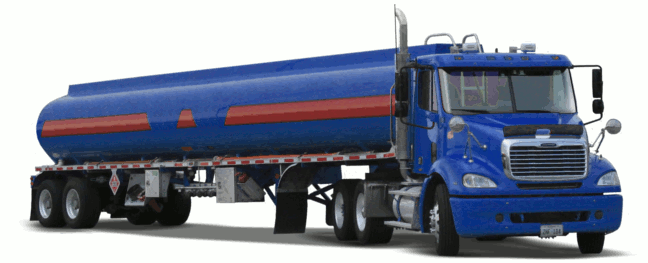
Other Course Options
Seminar Kits for Instructors
$540.00 Add To Cart
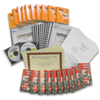
Class Hours: 8
Regulation: 49CFR 172.704
- 1 - Easy to Use Color Instructor Lesson Plan
- 10 - Student Workbooks
- 10 - Student Tests
- 10 - Student Certificates
- 10 - DOT Emergency Response Guidebooks
- 10 - Hazardous Material Compliance Pocketbook
- 1 - Course PowerPoint® with Regulations
- 1 - Course Videos - Over Two Dozen Safety Titles to Supplement Your Training
$33.00 Add To Cart
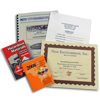
Additional student packs can be purchased to include:
- 1 - Student Workbook
- 1 - Student Test
- 1 - DOT Emergency Response Guidebook
- 1 - Hazardous Material Compliance Pocketbook
- 1 - Course Certificate
Online Couse Options
View the online course requirements on our Online Courses Page.
$75.00 Add To Cart
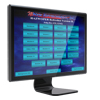 Prerequisite:
None
Prerequisite:
NoneClass Hours: 8
Regulation(s): 49 CFR 172.704 (a)-(c)
Course Code: DOT-OL
Course Description
This online instructional program is intended to help fullfil the training requirements for Department of Transportation (49 CFR 172.704) "HAZMAT". As with any online training program, site specific hazards and procedures should be reviewed by enrollees of this program.
Our program is intuitive and easy to use for yourself and your employees. Order for your entire department and use our automated invitation program to send registration codes to each individual in your department.
As always you will receive the same product and content support as you have come to expect from New Environment, Inc. Professional Confined Space instructors are standing by to answer your questions and concerns before, during and after the completion of your training.
The Department of Transportation (49 CFR 172.704) makes training mandatory for almost anyone who handles hazardous materials, regardless of the amount. This affects employees who select or fill hazardous materials packages, label containers, complete shipping papers, load or unload vehicles, transload hazardous materials, or operate vehicles used in the transport of hazardous materials. This course can be used for both the initial and recurrent training requirements.
Course Regulation
The Department of Transportation (49 CFR 172.704) makes training mandatory for almost anyone who handles hazardous materials, regardless of the amount. This affects employees who select or fill hazardous materials packages, label containers, complete shipping papers, load or unload vehicles, transload hazardous materials, or operate vehicles used in the transport of hazardous materials. This course meets both your initial and recurrent training requirements.
49 CFR 172.704 (a):- (a)(1): Each hazmat employee shall receive general awareness/familiarization training designed to provide familiarity with the requirements of this subchapter, and to enable the employee to recognize and identify hazardous materials consistent with the hazard communication standards of this subchapter.
- (a)(2): Each hazmat employee shall receive function-specific training concerning requirements of this subchapter, or exemptions issued under subchapter A of this chapter, which are specifically applicable to the functions the employee performs.
- (a)(3): Each hazmat employee shall receive safety training concerning - ( i ) Emergency response information required by subpart G of part 172; ( ii ) Measures to protect the employee from the hazards associated with hazardous materials to which they may be exposed in the work place, including specific measures the hazmat employer has implemented to protect employees from exposure; and ( iii ) Methods and procedures for avoiding accidents, such as the proper procedures for handling packages containing hazardous materials.
- (a)(4): Security awareness training. No later than the date of the first scheduled recurrent training after March 25, 2003, and in no case later than March 24, 2006, each hazmat employee must receive training that provides an awareness of security risks associated with hazardous materials transportation and methods designed to enhance transportation security. This training must also include a component covering how to recognize and respond to possible security threats. After March 25, 2003, new hazmat employees must receive the security awareness training required by this paragraph within 90 days after employment.
- (c)(1): Initial training. A new hazmat employee, or a hazmat employee who changes job functions may perform those functions prior to the completion of training provided -- (i) The employee performs those functions under the direct supervision of a properly trained and knowledgeable hazmat employee; and (ii) The training is completed within 90 days after employment or a change in job function.
- (c)(2): Recurrent training. A hazmat employee shall receive the training required by this subpart at least once every three years.
The Following Topics are Covered in this Course
- HAZWOPER Overview
- Hazardous Material Classes
- Container Markings
- Loading and Unloading
- Hazardous Material Tables
- Hazardous Material Exercise Review
- Uniform Hazardous Waste Manifest
- Straight Bill Of Lading
- 704 Marking System
- Hazard Communication
- Emergency Response Guidebook
- Personal Protective Equipment
- Hazard Communication Glossary
- 49 CFR 177.816 Attachments
- HAZMAT Transportation Security Awareness
- Course Review And Final Test
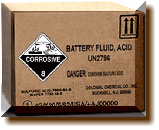

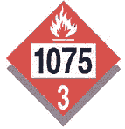
On-Site Training
New Environment, Inc. offers On-Site Training for this course, call or E-mail us to schedule this course.
Individual Products
Instructor Materials
$125.00 Add To Cart

The Following Topics are Covered in this Course
- HAZWOPER Overview
- Hazardous Material Classes
- Container Markings
- Loading and Unloading
- Hazardous Material Tables
- Hazardous Material Exercise Review
- Uniform Hazardous Waste Manifest
- Straight Bill Of Lading
$125.00 Add To Cart
 Fully editable PowerPoint presentation for 8-Hour DOT HAZMAT
Fully editable PowerPoint presentation for 8-Hour DOT HAZMAT
Student Materials
$20.50 Add To Cart
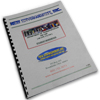
Student Material Includes:
- Student Background Survey
- Color Student Classroom Workbook
- 20 Question Test
- Certificate Of Completion*
- Participant Evaluation Form
$6.00 Add To Cart

This Guidebook is primarily a guide to aid first responders in quickly identifying the specific or generic hazards of the material(s) involved in the incident, and protecting themselves and the general public during the initial response phase of the incident.
The Emergency Response Guidebook is updated every three to four years to accommodate new products and technology.
Use this DOT-issued guidebook to help you satisfy DOT's requirement that Hazmat shipments be accompanied by emergency response information (49 CFR Section 172.600).
View the 2024 Emergency Response Guidebook Summary of Changes from 2020.
Published by the U.S. Department of Transportation. 4"x5.25" Pocket Version
$6.50 Add To Cart
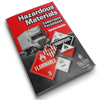
This easy-to-read pocketbook gives your drivers fast access to the current regulatory information they need while hauling hazardous materials. And that can help reduce the chances of hazardous materials incidents resulting from human error.
Contains hazardous materials regulations as amended by HM-215G, the information your drivers need to stay in compliance.
Updated monthly, the pocketbook covers identifying hazmat shipments, placarding, loading and unloading, transport, and specific class requirements. Includes the §171.101 Hazardous Materials Table with a placard column to help drivers easily identify DOT-required placards, plus the List of Hazardous Substances, the List of Marine Pollutants, and special provsions.